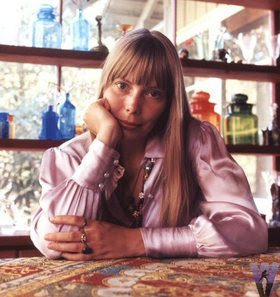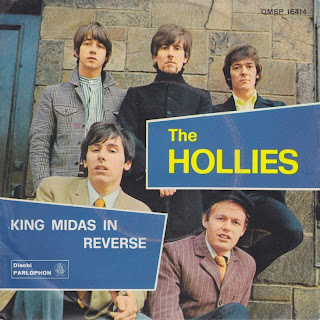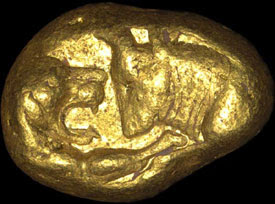If you liked it
Then you shoulda put a ring on it!
Three of my four children have gotten engaged this year. Of course, 2013 isn't over yet, so there's still time for my youngest child to make it four for four. But he's only 18, so I'm not anticipating any more betrothing activity in the near future.
I'm sure you're dying to know how I'm holding up against this engagement onslaught. I appreciate your concern – but I'm doing pretty well, all things considered.
Sure, I occasionally feel an attack of the vapors coming on, and need to lie down with a cool washcloth on my forehead for a few minutes. But most of the time I go about my business offering nary a hint to the outside world that my life has been turned upside down (not to mention inside out).
The first of the three weddings will take place in just a few days. It involves my oldest son, who just turned 30. I was almost 30 when I got married, and like my son, had known my wife for a number of years before I succumbed to the inevitable and proposed.
Why did it take so long for the two of us to decide we liked it enough to put a ring on it? I'll let my son speak for himself, but I'm pretty sure I know the answer, because the answer is pretty much the same for all men who put off getting married – they're hoping that something better will come along. Or at least something different, which is the same thing (at least in the short term).
Most men have absolutely no reason to believe that something better will come along. We're lucky to have done as well as we have, given that we are clueless losers – not to mention clumsy, smelly, and hairy to boot.
Yet we still hope . . . dum spiro, spero.
The buildup to a current-day wedding is quite different than it was when I got married in 1980.
Back then, the prospective bride could expect a shower to be organized by her maid of honor and attended by female family members and a few close friends. A bridal shower in those days was a relatively modest affair – it was usually held in the afternoon, with simple refreshments.
The groom's best man would be expected to organize a bachelor party, which commonly featured a lot of drinking and some mild debauchery – some stag films, perhaps, or a visit to a strip joint (where all the fellas would attempt to hide their nervousness and discomfort).
That was about it when it came to pre-wedding festivities.
Today, things are very different. Even the invitations are complicated. (Actual invitations are preceded with a "save the date" notification – which is sent out far enough in advance to preclude excuses for nonattendance at the wedding on the basis that one already had a previous engagement for that date.)
I wrote briefly about my son's Chicago bachelor party a few weeks ago. Since then, his intended has enjoyed a bachelorette party, which was attended by 14 young women – including my daughters (both of whom are now engaged themselves).
"Bachelorette" is a ridiculous word, isn't it? I think it was first used on the old Dating Game television show.
It should really be "bacheloress" – after all, "-ette" is a French suffix, and usually indicates a smaller version of the word it is attached to. (It's "lioness," for example, not "lionette.")
The traditional English term for an unmarried woman was "spinster," of course, which has come to have a negative connotation – it seems to be viewed nowadays as a synonym for "old maid."
It should really be "bacheloress" – after all, "-ette" is a French suffix, and usually indicates a smaller version of the word it is attached to. (It's "lioness," for example, not "lionette.")
The traditional English term for an unmarried woman was "spinster," of course, which has come to have a negative connotation – it seems to be viewed nowadays as a synonym for "old maid."
But I'll follow current usage and stick with "bachelorette" – although I'm not really happy about it.
The first big event on the bachelorette party agenda (which took place in Manhattan) was a Saturday morning visit to Trapeze School New York for an introductory trapeze class.
Here's a TV commercial for Trapeze School New York:
Here's a TV commercial for Trapeze School New York:
Here's an excerpt from the school's letter to first-time flyers:
You're finally standing on the platform 23 feet above the ground. You have the safety lines securely fastened to your belt, the instructor is holding you, and you are holding the bar.
[And you are whimpering softly.]
Leaning out over the edge of the platform, you may be eager to go or wondering what the heck you're doing up there. In any case, our instructors will treat you with patience and respect.
[They will politely ignore your loss of bladder control, having seen it many times before.]
 |
| The moment of truth! |
We live the decision to jump completely up to you, though we give strong encouragement at the crucial moments. . . .
[Including a gentle push in the small of the back of the reluctant student.]
There may be one moment of fear just as you commit your body to the task. Once you're off the platform, it's all bliss . . . a feeling like no other and one that you will expand upon in future jumps.
[Future jumps? You mean . . . do this again?]
Your second time at the bar you will have the option of attempting the knee hang. . . .You'll be instructed to swing out, put your knees through your hands and wrap them around the bar just like you did on the playground. Then you will be asked to let go with your hands and swing upside down.
[Girls wore dresses when I was a kid, so I'm pretty sure I'd remember if they had done this on the playground at good ol' Irving School in Joplin, Missouri.]
If you are relaxed and open with your knee hang . . . the last 45 minutes of class will be your chance to take your new trick to the hands of the catcher. You will be instructed to perform your knee hang as before. This time though, when you reach the front of your 2nd swing, you may meet the catcher. If your position is great, he will wrap his strong hands around your wrists. You will quite naturally do the same to his. At the same moment your legs will release the bar and you will fly with the catcher.
Nothing could be more exhilarating or satisfying. Because if you can go up there and swing on a flying trapeze, you can do anything!
After completing the trapeze lesson, those ladies who still had an appetite headed for Philip Marie, a West Village restaurant, for brunch -- including unlimited mimosas, bellinis, or bloody Marys. (Bachelorette parties seem to involve just as much drinking as bachelor parties, which is a clear indicator of the healthy equality between the sexes that exists in our enlightened society.)
Next, our bachelorettes -- no doubt somewhat woozy after the trapeze stuff and all the drinking -- wobbled up to Le Parker Méridien, a fancy-schmancy hotel (slogan: "Uptown. Not Uptight") that is home to the TenOverTen salon (slogan: "The Destination Manicure") for their choice of four different manicures and pedicures. (Eyebrow shaping and tinting and lash tinting are among the other service available at TenOverTen.)
Our now-sober party then took their fabulous-looking fingers and/or toes back to their Times Square hotel to relax, change into their fancy evening outfits, and dive into pre-dinner appetizers and more drinks.
 |
| One of the Beauty & Essex dining rooms |
Dinner (which began at a very civilized 9:30 pm) was at Beauty & Essex, a "grand jewel box" of a restaurant on Manhattan's Lower East Side.
Here's what the New York Times had to say about Beauty & Essex:
The front is set up as a pawn shop, with Flying V guitars and a Raymond Chandleresque blonde behind the register. . . .
The ground floor is a sleek restaurant that serves lounge-friendly bites like lobster bisque dumplings. Upstairs, past a staircase that spirals around a soaring chandelier, is a wood-paneled lounge with divans and another bar. There is free Champagne in the ladies’ bathroom. Men aren’t so lucky.
 |
| The pawn shop at Beauty & Essex |
Here's how the newspaper described the typical Beauty & Essex crowd:
On a recent Saturday night, the bars were cheek-by-jowl with single and commingling 30-somethings. Men wore Bowery-chic ensembles (suspenders, thermals, fingerless gloves) or Murray Hill uniforms (khaki, polo, popped collar). In the lounge, small groups of shimmery women clutched equally sparkly flutes of Champagne.
 |
| Look who came to the grand opening of Beauty & Essex! |
But it's probably best to pull a discreet (and hopefully opaque) veil across the ladies' late-night shenanigans. What the husbands, fiancés, and male significant others don't know won't hurt them!
"Single Ladies" was released in October 2008 -- six months after Beyoncé's secret marriage to Jay-Z. It was a huge hit that made it all the way to #1 on the Billboard "Hot 100" chart, and it won three Grammys (including "Song of the Year").
The black-and-white music video features "J-Setting" dance choreography. Here's the Saturday Night Live parody of it, featuring Beyoncé and Justin Timberlake:
Here's "Single Ladies":
Click here to buy the song from Amazon:










































